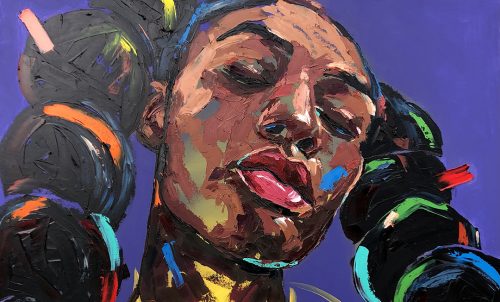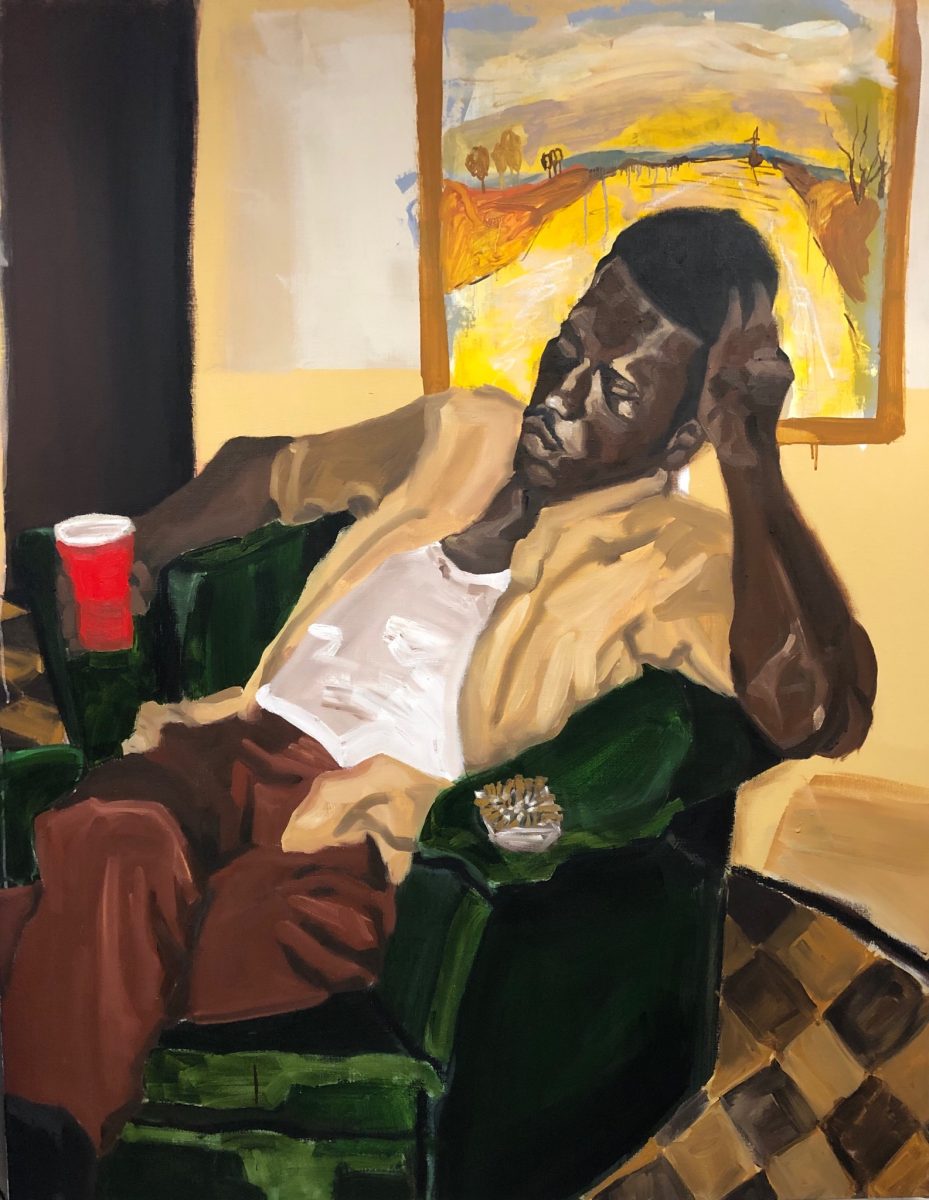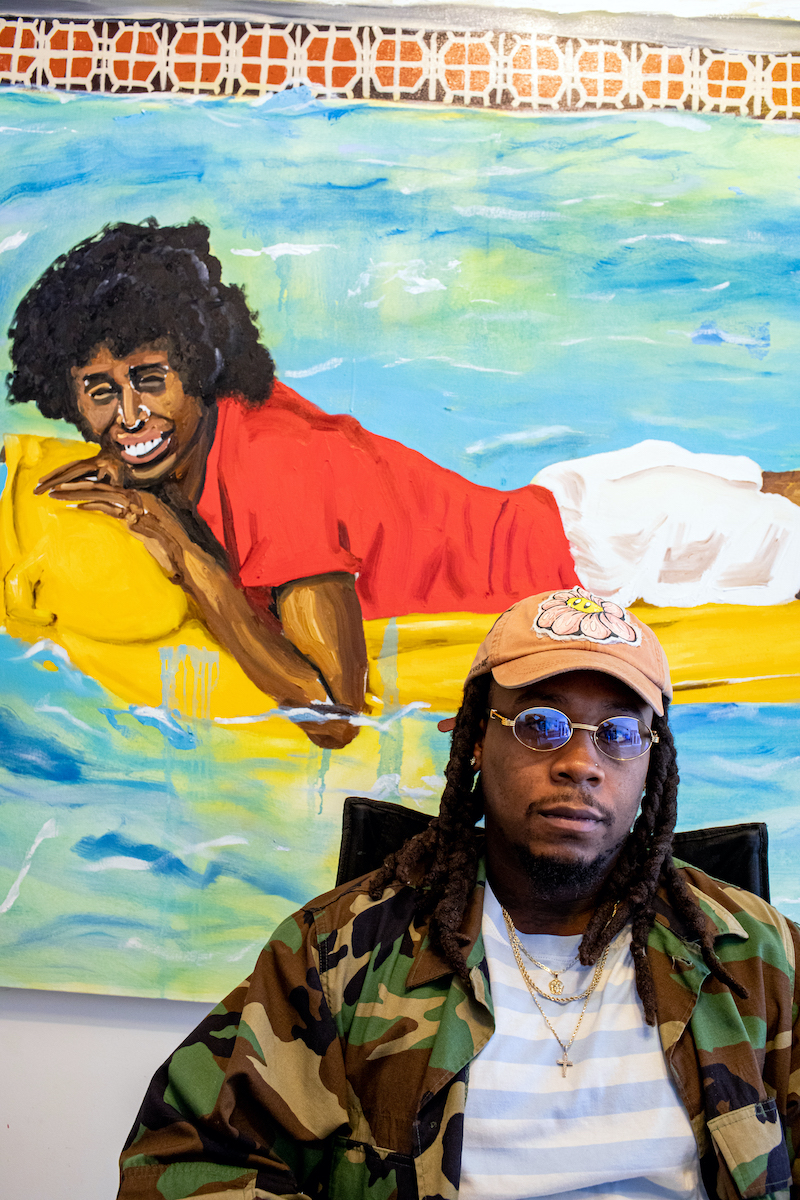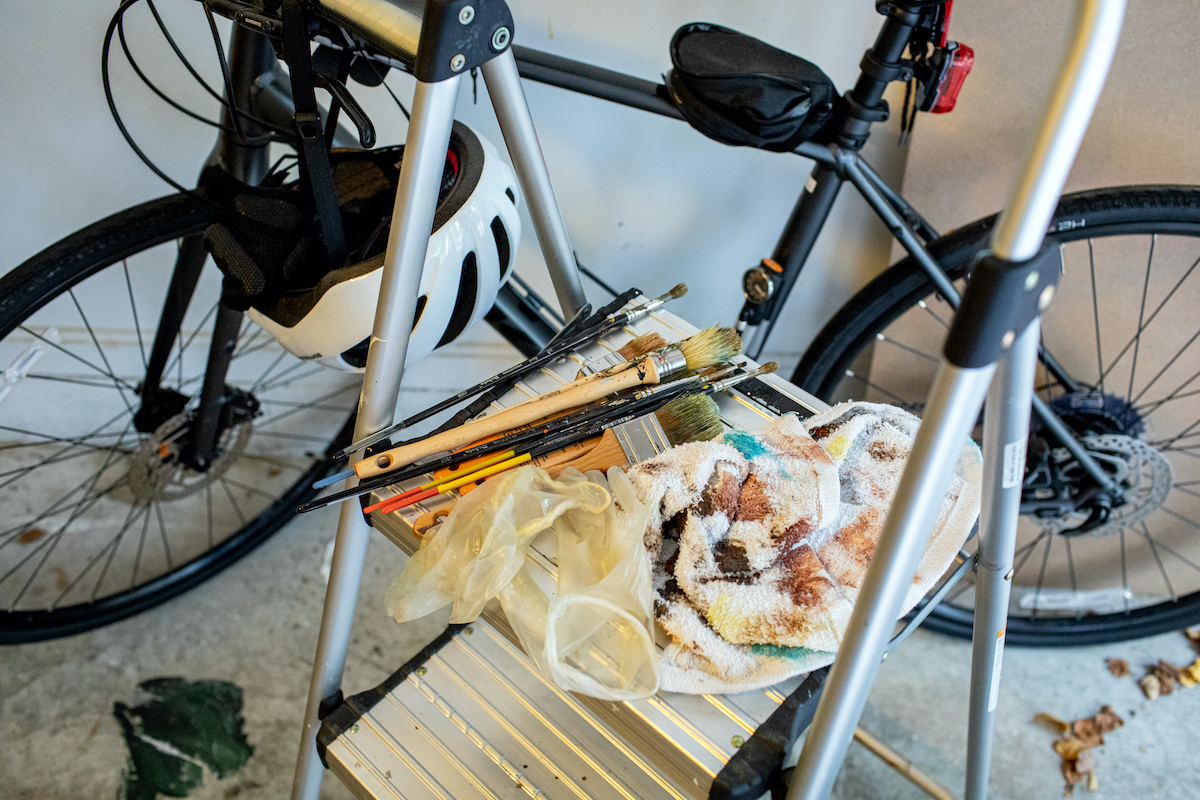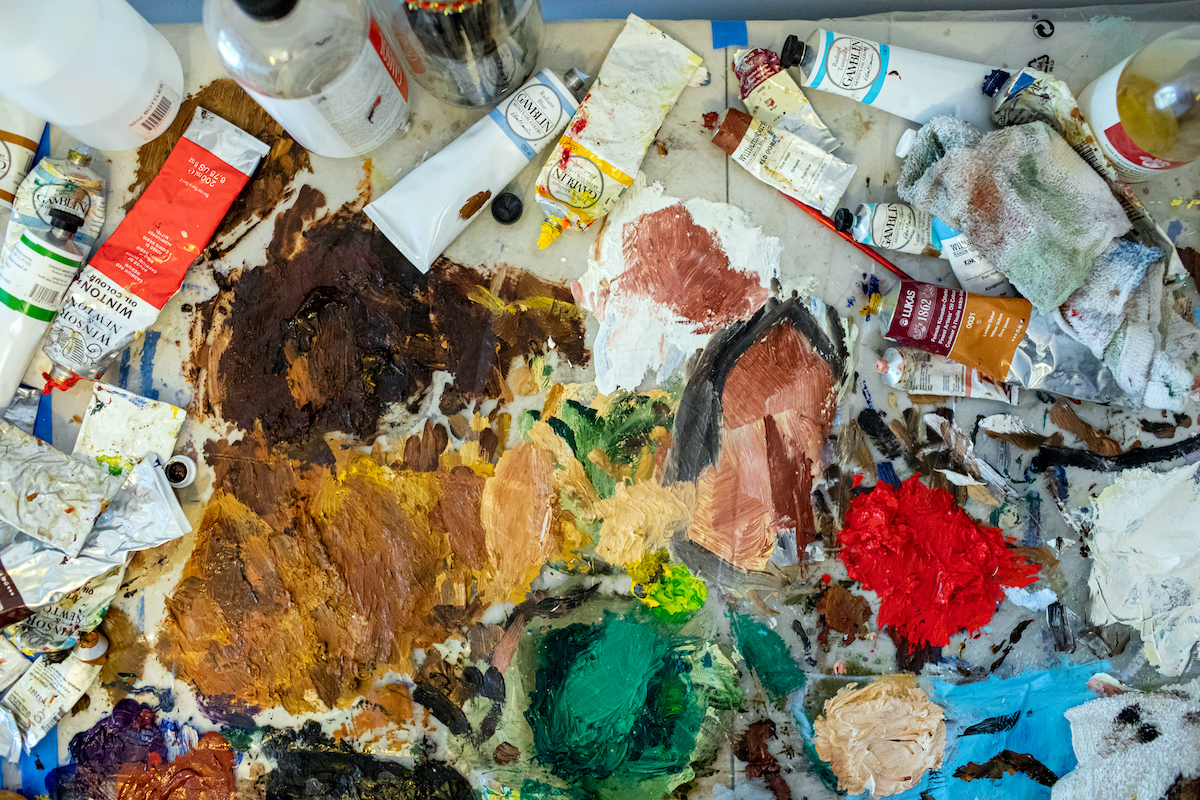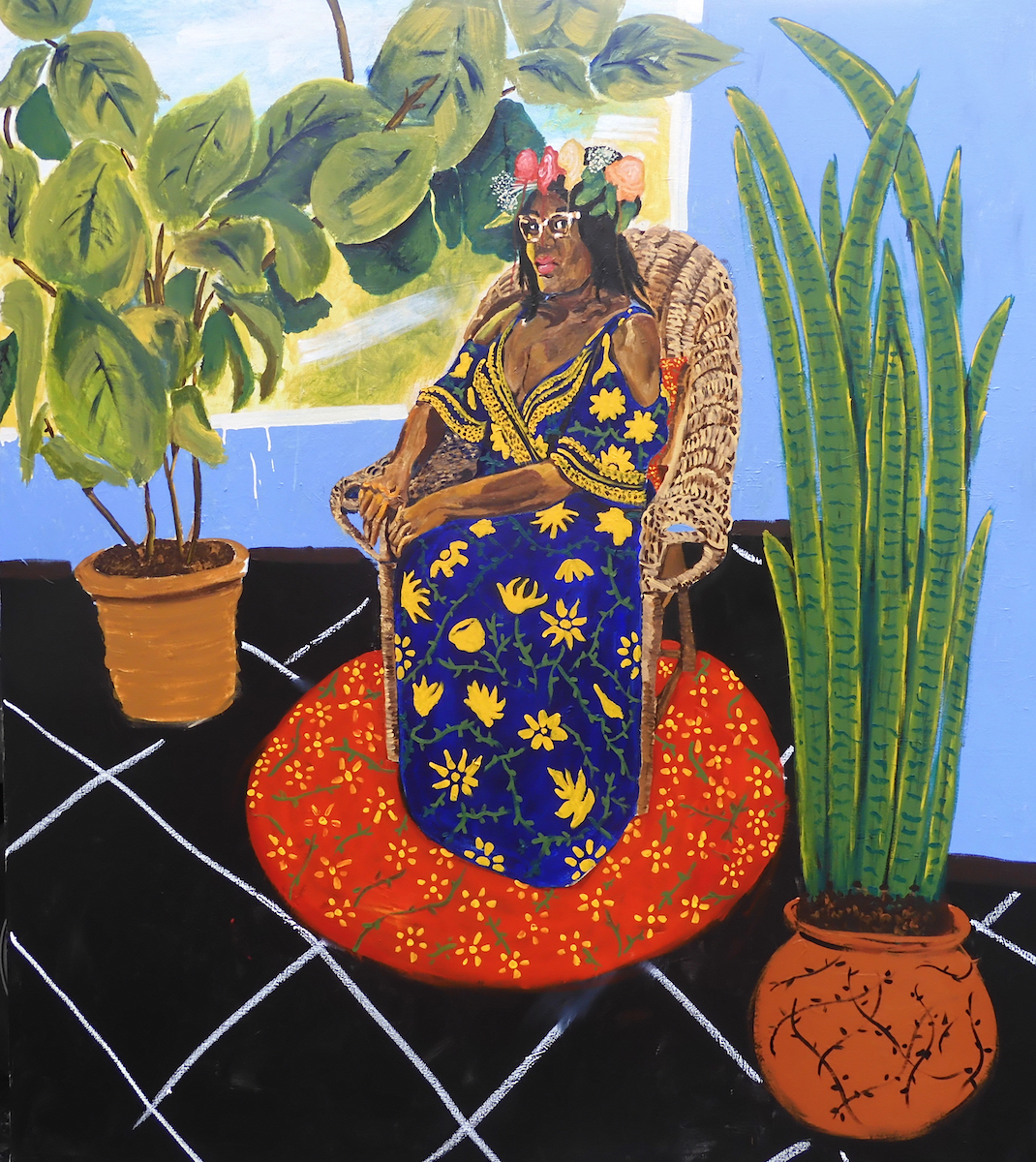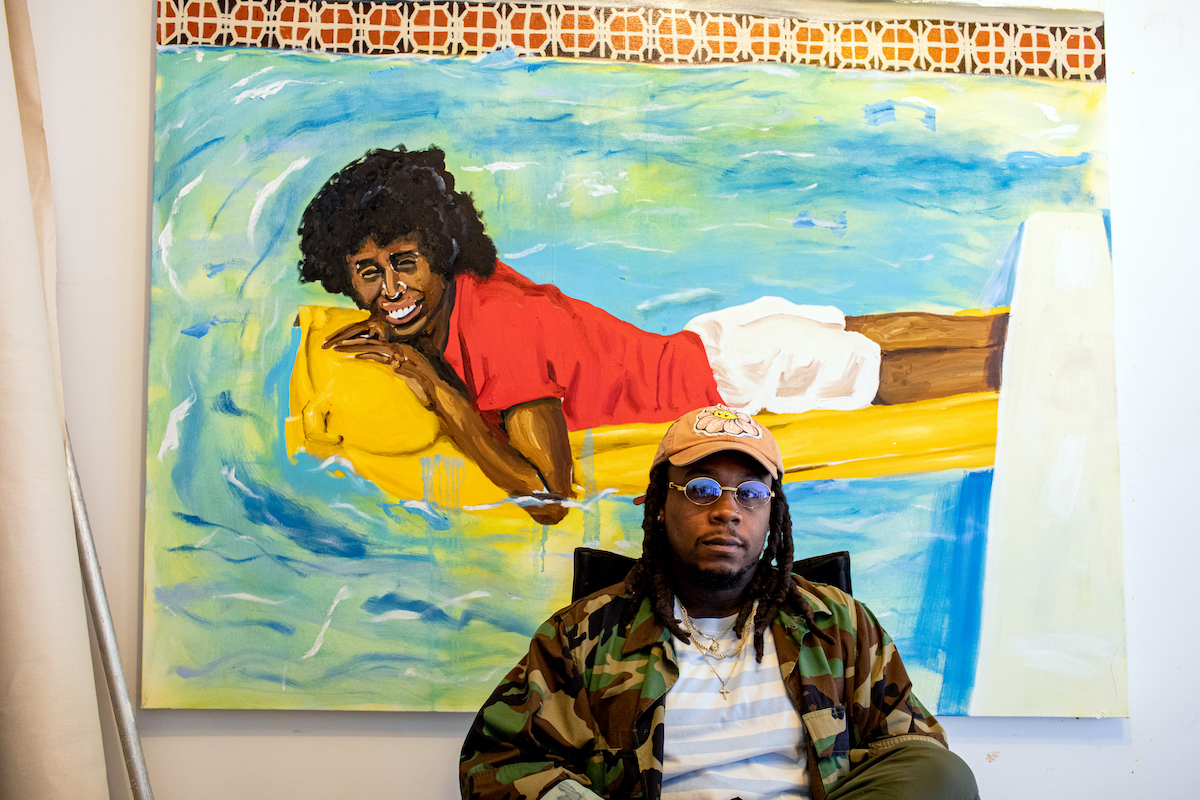You’re from Baltimore originally. How has the art scene changed in your lifetime? Do you think we’re entering a different stage of the Baltimore art scene?
I do. I can only say this because I’m involved in it. I wonder what it looks like to someone who’s not in this space. What does it look like to, like, my grandmother? Does she see it? If I’m involved, of course I can see the shift and the change. But if someone who doesn’t even know about art or paint, someone who’s not a part of the scene, if they know about certain things that have happened, if it reaches them and is making a significant impact in their day and they are aware of it, then I feel like there’s really been a shift and a change.
I can say I’ve noticed a lot more unity, a lot more community-based things. And I feel like that’s only going to continue to propel us to a bigger platform. I think when it comes to creativity in Baltimore, one of the things that we’ve messed up is our lack of being able to come together and unite and make something happen, as a team, as a unit. But I feel like now, more than any time, there is a lot of unity and people coming together. It takes time but I feel like we’re on a good track in terms of collectively getting together to make something happen. That could really be the foundation for a great future.
Does your astrological sign match your personality? Is astrology just silly?
My sign matches my personality 100 percent. I am a Pisces and if you look up the definition, my face will be next to it. I am all of the characteristics of a Pisces. Fortunately for me, I have been able to acknowledge it and make it work for me. I am very laidback around people I don’t know. I am extremely generous, and sometimes that can be a bad thing. I am very emotional, but I’ve learned over the years how to control it, and of course, I am very creative. I have been creating all my life. I remember when I was a kid, I wanted to play football so bad. I would make my own football equipment from things I found laying around the house. One day, I made a football helmet out of a bike helmet and the facemask was made of a clothing hanger. I would watch football games on TV and play along with what was happening.
I see an influence of Kerry James Marshall in your work in the way you mix the figurative with moments that are clearly about the application of paint to the surface, but who else has been an influence on your painting?
Too many to name, but for the sake of the interview, I would say Henry Taylor, Noah Davis, Lynette Yiadom-Boakye, Njideka Akunyili Crosby, Henri Matisse. I love Picasso. I love Picasso because he showed me that it was okay to continue to evolve and change what you’re painting about based on what’s happening in your life. Most painters that I’m really into have an affinity for using paint in a manner that is beyond illustrating something—it’s like they create a language with paint. The paint is working with itself to create something. It’s beyond me making it look good—it’s putting paint right here and putting paint right there and they’re going to mesh and jel and have this beautiful interaction, and mesh and play and come up with things that I couldn’t even do on my own. That’s what I’m really into, those that are artists that I really lock in with.
Did you have a formative and/or terrible first job? What was it?
All of my jobs were learning experiences. I think the most formative one was doing direct care. I did that for about eight years. It really taught me to appreciate the mundane. I am grateful for that opportunity.
What have you learned recently that kind of blew your mind? Or if you haven’t learned anything recently that surprised you, what did you learn the hard way?
Lol, most recently I’ve learned that the top celebrity earner of 2020 was Kylie Jenner, bringing in $600 million this year. That was mind-blowing for me.
